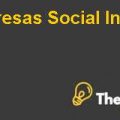FEDERAL RESERVES: MONETARY POLICY
The global recession started in the early 2000 and caused the major financial crises in terms of negative gross domestic products (GDP) and the 2001, the economic recession was countered by the Federal Policy Makers by lowering the Fed Fund Rates to 1% in 2003.
The recession came again in 2008 and it was called the 2008 global recession in which the market declined rapidly; this recession happened due to the deregulation in the financial industry which was caused by the FED increasing the fund rates in 2004 and 2006 between 4.5% and 5.25%, this caused the lowering down of the house prices which were backed by interest-backed securities. Many of the top banks defaulted in the fiscal year 2008, including the Lehman Brothers. (Binyamin Appelbaum, 2014)
To counter the effects of the market, the FED deal makers also created a new monetary policy, which resulted in the lowering of interest rates to the percentage of 0.25% which is called the effective zero, in the last quarter of 2008.One other thing which helped in countering the effects of the market was the bank bailout which was approved in 2008, this gave a new hope and chance for the banks to write off the losses which came on to them because of the derivatives market. Further, the FEDs encouraged everyone to invest in the bond markets to counter the further effects, this is called Quantitative Easing.
Federal Reserves Monetary Policy Harvard Case Solution & Analysis
This Federal Reserve Monetary Policy ensured three main tools: Stable prices, maximum employment andmoderate long-term interest rates.The Feds bore themonetary policy by setting up a target for the federal fund ratesin which, the bank borrows and lends reserves on an overnight basis. The federal funds rate influenced the interbank lending rate through operations in the markets and transactions which involved treasury securities.(The econmic Recession, 2008).
The Feds commenced the rounds of QE from 2009 to 2014. The third quarter completed in the October 2014 and showed that the figure in the balance was$4.5 trillion now, which was fivetimes greater than the pre-crisis amount.
After the overflow of the crisis was over, the feds had to use the two important tools which helped to normalize the balance sheet,they are:
- By raising the rate of interest paid to banks on their reserves.
- By engaging in reverse repurchase agreements through a new overnight facility.
In December 2015, the interest rates increased to 0.5%, whichaffected the business capital spending such as the plant and property, investments, etc.This stabilized the growth of the gross domestic product (GDP) as well as improvement in the imports and exports after the changes in the monetary policy. Monetary policies used in the short run as well as in long run, also enhanced the inflation rate. The slow and stable rate of inflation helped to stabilize the price and in decisions related to the economy.
Now we move on to the point if those actions have warranted the recession period or not?
In this case, we have discussed the unprecedented monetary policy (Buying the bonds from Fed open market commission)...................
This is just a sample partical work. Please place the order on the website to get your own originally done case solution.













